Schema markup, also known as structured data, is a form of microdata that you can add to your website to help search engines better understand its content. By providing explicit clues about the meaning of a page, schema markup enables search engines to display rich snippets in search results, enhancing visibility and click-through rates.
This article talks about the comprehensive world of schema markup, explaining its importance, various types, implementation and testing methods, and benefits.

How Schema Markup Works
Structured data uses a standardised format to label different types of information on a webpage. This data helps search engines categorise and index your content more effectively. When search engines encounter schema markup, they can use this additional information to create enhanced listings that stand out in search results.
Types of Schema Markup
Common Types of Structured Data
Local Business: Ideal for any local business, it includes details like address, phone number, opening hours, and customer reviews. The ‘LocalBusiness’ schema type has various properties such as an ‘address’, ‘telephone’, ‘openingHours’, and ‘aggregateRating’ to provide comprehensive business information.
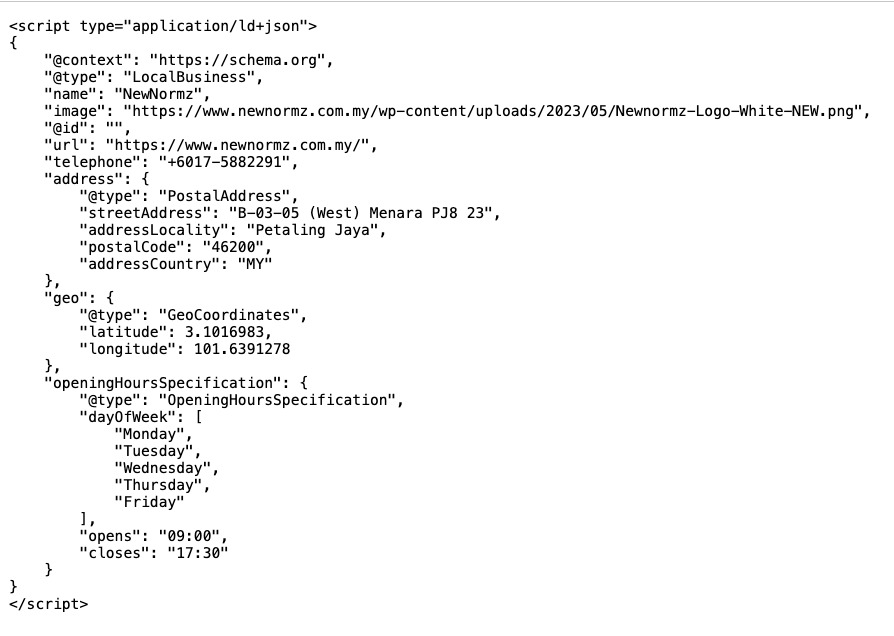
Logo: Used to specify a website’s logo, helping search engines display the correct logo in search results and knowledge panels. The ‘Logo’ schema type is implemented using the ‘logo’ property within the ‘Organisation’ schema, linking to the URL of the image file representing your logo.
About Page: Marks up the About page, providing details about the organisation, its purpose, and key personnel. The ‘AboutPage’ schema type includes properties like ‘mainEntity’, which points to the organisation or person the page is about.
Contact Page: Provides information about the Contact page, including contact details like phone numbers, email addresses, and physical addresses. The ‘ContactPage ‘schema type can include properties like ‘contactType’, ‘telephone’, ‘email’, and ‘address’.
Website: Provides information about a website, including its name, URL, and search target. This can improve how your site appears in search results. The ‘Website’ schema type can include properties like ‘name’, ‘url’, and ‘potentialAction’ (which describes users’ primary actions on your site, such as a search action).
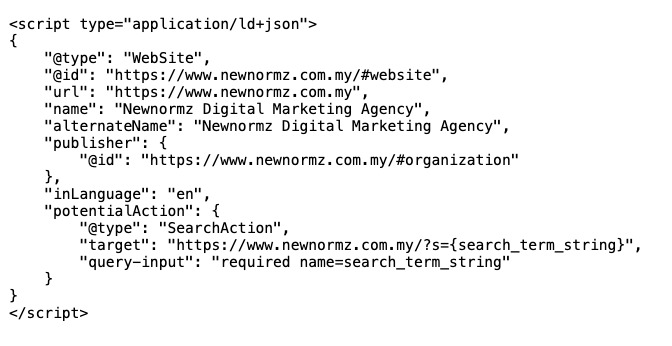
Product: Used for individual products or offerings, this markup includes product names, descriptions, prices, availability, and user ratings. The ‘Product’ schema type contains properties such as ‘name’, ‘description’, ‘offers’ (which can include price and availability), and ‘aggregateRating’.
Breadcrumb: Used to mark up breadcrumb navigation trails, helping users understand and navigate the site’s hierarchy. The ‘BreadcrumbList’ schema type is used here, which includes properties such as ‘itemListElement’ to describe each breadcrumb in the navigation path.
Article: Used for news articles, blog posts, and other written content. It helps search engines understand details like the headline, image, date published, and author. The ‘Article’ schema type can include properties like ‘headline’, ‘image’, ‘datePublished’, and ‘author’.

Specialised Types of Structured Data
FAQ: This schema is used for pages containing a list of frequently asked questions and answers. However, Google has recently reduced the visibility of FAQ rich results. Now, they will only be shown for well-known, authoritative government and health websites. For all other sites, FAQ rich results will no longer be shown regularly. The ‘FAQPage’ schema type includes ‘mainEntity’ with ‘Question’ and ‘Answer’ schema types to describe each FAQ pair.
How-to: Ideal for instructional content, this schema provides steps, materials, and tools needed to complete a task. As of September 2023, Google no longer shows ‘How-to’ rich results on desktop, and this type is now deprecated. This change affects the metrics for the ‘How-to’ search appearance in the performance report and the number of impressions reported in the ‘How-to’ enhancement reports. The ‘HowTo’ schema type includes properties like ‘name’, ‘step’, ‘tool’, and ‘supply’.
Video: Helps search engines index and display video content by providing details such as title, description, upload date, and thumbnail URL. The ‘VideoObject’ schema type includes properties such as ‘name’, ‘description’, ‘uploadDate’, and ‘thumbnailUrl’.
Recipe: Designed for food-related content, it includes ingredients, cooking time, nutritional information, and step-by-step instructions. The ‘Recipe’ schema type includes properties like ‘recipeIngredient’, ‘recipeInstructions’, ‘cookTime’, and ‘nutrition’.
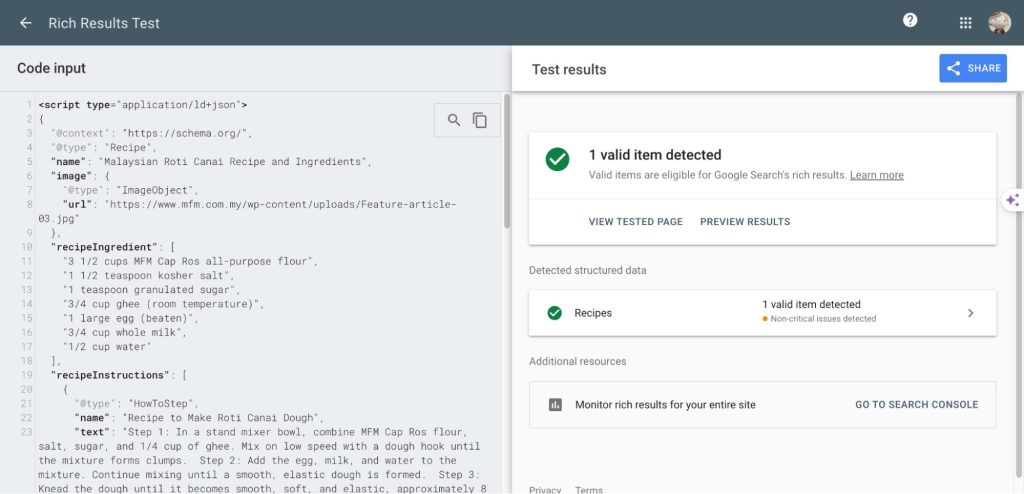
Schema Markup Generators Or Tools
Google’s Structured Data Markup Helper: A tool that helps you generate the correct schema markup for your content. It guides you through tagging various elements on your page and generates the necessary JSON-LD code for implementation.
Schema.org: The official website provides a comprehensive list of all schema types and their properties. It serves as the primary resource for understanding and implementing schema markup.
JSON-LD Generators: Online tools that help you create JSON-LD structured data. These generators allow you to input your content and automatically generate the appropriate schema markup.
Methods of Implementation
Microdata: An older method of adding schema markup directly to the HTML content. Microdata uses additional attributes in HTML tags to define structured data. It integrates schema types and properties directly into the HTML structure.
RDFa (Resource Description Framework in Attributes): Another method of embedding structured data into HTML. RDFa uses attributes from the RDFa vocabulary to enhance HTML tags with structured data. It is similar to microdata but can provide more complex data relationships.
JSON-LD (JavaScript Object Notation for Linked Data): The recommended method by Google for adding schema markup. JSON-LD is easy to read and implement, as it can be added directly to the HTML head section. It encapsulates structured data in a script tag, making it separate from the HTML content and less prone to errors during updates.
Check out our article on ‘5 Steps Guide to Implementing Schema Markup in WordPress’ here.
Benefits of Using Schema Markup
1. Enhanced Search Engine Results
Improved Click-Through Rates (CTRs): Rich snippets and enhanced listings often lead to higher CTRs as they provide more context and appeal to users. Users are more likely to click on results that provide immediate answers to their queries.
Knowledge Graph Entries: Structured data can contribute to the information shown in Google’s Knowledge Graph, enhancing your brand’s presence. This can include business information, contact details, and other key facts.
Rich Snippets: Schema markup can help your content appear as rich snippets in search results, providing more detailed information and increasing visibility. Rich snippets can include elements like star ratings, images, and other relevant details.

2. User Experience
Easier Navigation and Access to Information: Schema markup enhances the user experience by making it easier for users to find and understand your content. Clear and structured information can lead to a better overall experience.
Higher Engagement Rates: Enhanced search results can lead to increased user engagement and interaction with your site. Users are more likely to engage with content that provides clear and useful information at a glance.
3. Increased Visibility
Improved Rankings in Voice Search: Structured data is crucial for voice search optimisation, as it helps search engines understand and respond to voice queries more accurately. Voice search often relies on structured data to provide direct answers.
Better Local SEO: Using local business schema can improve your visibility in local search results, helping you attract more nearby customers. Local business markup can highlight your business in local packs and maps.
Tools to Measure the Impact of Schema Markup
Google Search Console: Provides insights into how your structured data is performing and highlights any issues that need attention. It offers reports on rich results and allows you to see how your markup affects search performance.
Bing Webmaster Tools: Offers similar features to Google Search Console, tailored for Bing search results. It includes tools for checking structured data and monitoring search performance.
Third-Party SEO Tools: Tools like SEMrush, Ahrefs, and Moz can help you track the impact of your schema markup on search performance. These tools often include features for monitoring keyword rankings, traffic changes, and the presence of rich snippets in search results.
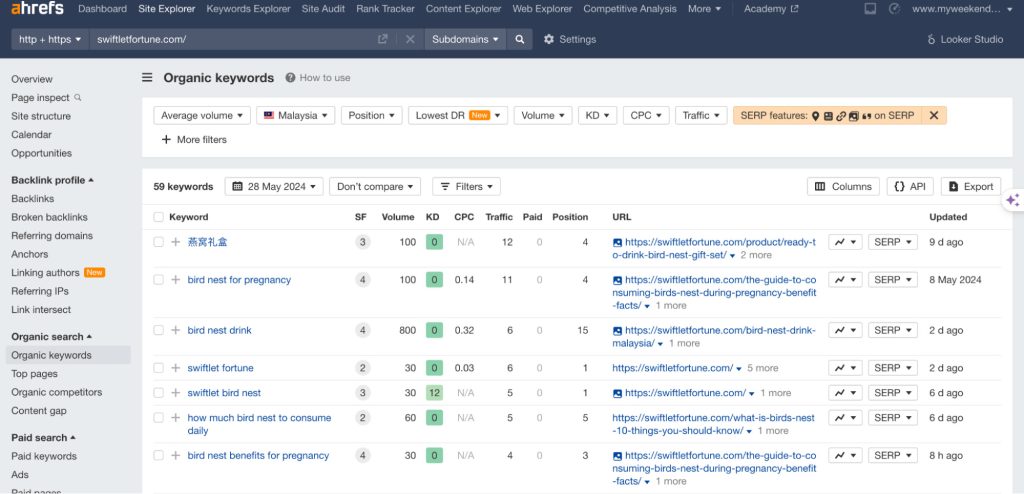
Common Challenges and How to Overcome Them
Implementation errors can significantly hinder the effectiveness of schema markup. Ensuring your structured data is valid is crucial, and tools like Google’s Rich Results Test or Schema Markup validator can help identify errors and suggest fixes. Additionally, using the appropriate schema type for your content is essential. Misusing schema types can result in errors or no visible effects in search results.
Addressing common issues involves thorough testing and validation. Always test your schema markup using validation tools before deploying it to your live site, as this helps catch and fix errors early. Continuously monitor the performance of your structured data using Google Search Console and other SEO tools. Adjust your strategy based on the data and feedback you receive to ensure your schema markup is delivering the desired results.
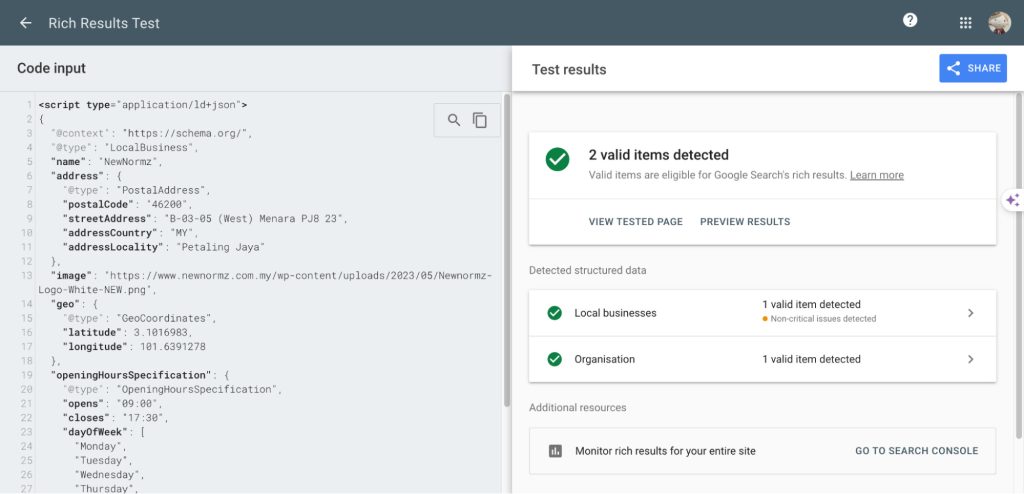
Other than that, keeping up with changes in schema markup guidelines is also important. Schema.org and search engines frequently update their guidelines and supported types. You can informed by regularly checking Schema.org and search engine blogs. To manage these updates efficiently, use automated tools and plugins that keep your schema markup current. Many CMS platforms offer plugins, such as RankMath and SEOPress, that help manage and update structured data seamlessly.
Conclusion
Structured data is an essential part of modern SEO. Implementing it on your website can lead to significant benefits in terms of search engine visibility, user experience, and overall site performance. By leveraging tools, staying informed about updates, and continuously monitoring your performance, you can make the most of schema markup and maintain a competitive edge in search results.
Start implementing structured data on your website today to see improvements in search visibility and user engagement. If you need help with the schema implementation, consult our SEO consultants in Malaysia now.
Bryan Tan is an SEO Specialist and CEO at Newnormz, helping hundreds of businesses achieve first-page rankings on Google. With a passion for driving organic growth, Bryan blends innovative strategies with hands-on experience to optimize websites for maximum visibility. Always at the forefront of the latest SEO insights and trends, he consistently adapts to the evolving digital landscape.






